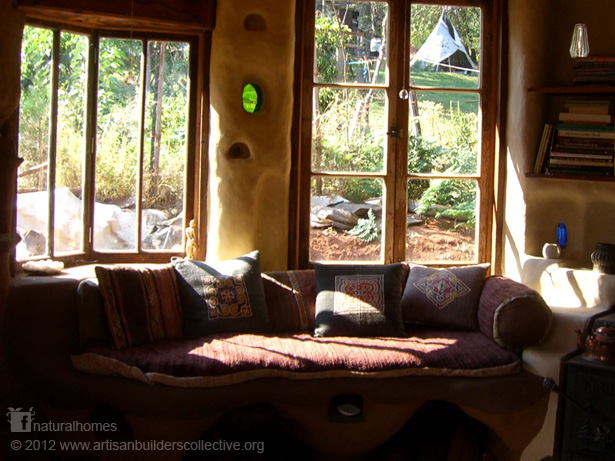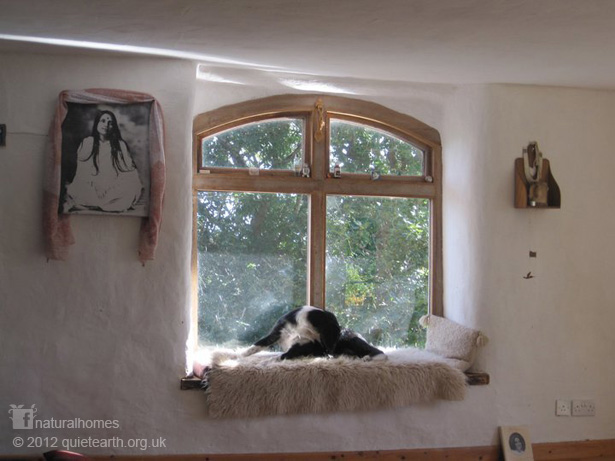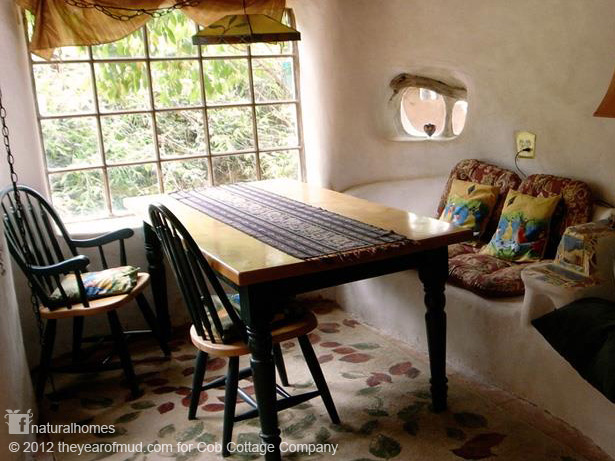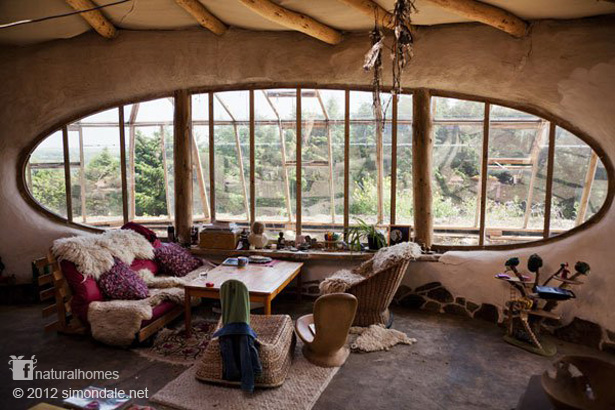Pattern Language
of Natural Homes No.180 Window Place.
|
|
|
This is a series of articles about
A Pattern Language by Christopher Alexander where we illustrate and discuss
the patterns using homes and buildings made from natural materials
like stone, clay, wood and straw. These materials are themselves one of the patterns, namely No.207
'Good (natural) Materials'. As with Alexander's book you will find links
to other patterns the pictures illustrate. At first not all patterns will be linked to
other articles but to illustrations of the patterns on our facebook album
'A
Pattern Language of Natural Homes' which is also available as a
widget
for your blog or website. Enjoy the creativity of
natural builders past and present and admire the architectural observations of
Alexander. |
|
| |
|
|
|
|
 |
|
|
|
|
| |
|
There is no doubt that this type of window seat, with low sills
and inviting cushions, does more than just provide a
place to sit; it touches something deeper in our sense of place
and belonging. Window places like these connect us with the spaces outside the home
allowing us to watch the world go by or nature change its
colours. These places in the home are not luxuries but rather
necessities. As Alexander says, "A room which does not have a
place like this seldom allows you to feel fully comfortable or
perfectly at ease." |
|
|
 |
|
| |
|
|
|
|
|
|
|
|
|
|
 |
|
Alexander describes four types of the window
place. The bay window, a window seat, a low sill and the glazed
alcove. These, he recommends, should be designed in to any
room in the home where you will spend any length of time during
the day.
The bay window lends itself to sculptural
cob
homes, that's homes build with clay, sand and straw. Above is an
example from one of the homes built by Michael "Meka" Bunch
of
Artisan Builders Collective. A bay window
is a shallow bulge in the room with windows wrapped around it. The
bay window provides a greater intensity of light with wide views
of the outside.
Left is the window seat in Rachel's straw bale
home in Wales at Quiet Earth.
A window seat is a more modest window
place, basically a niche in the thick walls [Pattern No.197]
of the home. Generally cats and dogs have a habit of finding the
best place to sit. |
|
| |
|
|
|
|
|
|
|
|
|
|
 |
|
The most modest of the window places is the low sill.
The correct height for such a window place where you can draw up a
chair to enjoy the view is 12-14 inches, about 30-35cm. The sense
of enclosure is not derived from the window but rather the chair
which ideally will have a high back and arm rests.
The picture left is of the living room in Ianto and Linda's cob
home in Coquille, OR, USA. Ianto and Linda run
Cob Cottage
Company
and have taught cob building to hundreds of people over the years.
They are the authors of 'The Hand Sculpted-House' which deals with
many of the patterns from
A Pattern Language.
|
|
|


If you are building a natural home this book is a 'must have'
for your collection.
|
|
|
|
|
|
|
|
|
|
|
|
|
 |
|
The most elaborate of the window places is the glazed alcove.
Almost like a conservatory making a strong connection between the
home and the world outside. The picture left is Simon Dale's straw
bale home at Lammas ecoVillage in Wales. Simon has designed the
home to connect the living room with the greenhouse where he and
Jasmine grow food for their young family. Any
window can become an inviting window space as long as the window
is designed as a place to sit, to be, rather than just a hole in
the wall. |
|